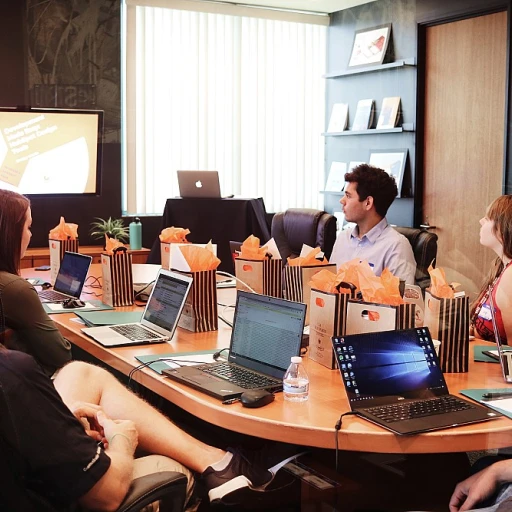
Understanding the Need for Reskilling
Recognizing the Increasing Demand for Reskilling
In today’s rapidly evolving job market, reskilling is becoming more essential than ever. The pace at which technology advances and industries transform demands that both employees and employers adapt quickly. As businesses race to remain competitive, identifying the necessity for performance improvement and enhancement of skills is crucial. This shift not only addresses specific performance issues but also builds a more robust and versatile workforce. Companies are increasingly investing in performance improvement plans (PIPs) to systematically bridge the skills gaps. A well-structured plan supports employees in aligning their skills with organizational goals. By focusing on precise areas improvement and leveraging a solid plan template, organizations ensure that their team members are well-equipped to tackle upcoming challenges. The primary goal of these efforts is to elevate employee performance, thus directly impacting the productivity of the organization. Regular performance reviews and feedback create an environment where employees feel guided and valued, helping them progress in their roles effectively. By employing strategic improvement plans and employing templates like pip templates or improvement plan frameworks, managers can systematically review performance and set specific expectations. Team members benefit from regular check-ins and timely support, which fosters a culture of continuous growth and learning. Expanding on this, the rise in need for reskilling is also being pioneered by organizations dedicated to embracing change. A prominent example can be seen through the initiatives of The Learning Company, which are leading the way in reskilling practices. They emphasize the value of staying adaptable and committed to lifelong learning, ensuring that their employees not only meet current performance standards but excel beyond them.Key Elements of a Performance Improvement Plan Template
Essential Components to Consider
Crafting an effective performance improvement plan requires careful attention to specific elements that ensure it is both actionable and impactful. Templates serve as a valuable starting point, allowing managers and employees to address performance issues systematically and consistently across the organization.
Defining Clear Objectives
An improvement plan should set clear objectives that align with organizational goals. These objectives play a crucial role in defining performance expectations for each employee. It's essential to pinpoint specific areas of improvement and outline the desired outcomes, serving as benchmarks that will measure progress over time.
Action-Oriented Strategies
Developing strategies that support employee improvement is a fundamental aspect of any plan. By breaking down improvements into manageable steps, the PIP template becomes a roadmap that guides employees toward those goals. An effective plan should include adequate support measures to empower employees to achieve their ambitions.
Regular Feedback and Support
To foster continuous development, regular check-ins and feedback sessions are critical. This ensures that employees are aware of their progress, successes, and areas needing attention. Constructive feedback should be coupled with guidance and resources, providing an environment conducive to skill development and performance improvement.
Implementing and Reviewing PIPs
A successful performance improvement plan isn't static; it's a dynamic tool that requires continuous monitoring and adjustment. Regular performance reviews allow managers and team members to evaluate the defined action plan's effectiveness and make necessary tweaks, keeping the improvement plan aligned with both organizational needs and employee growth.
Setting Clear Objectives and Goals
Defining Achievable Objectives for Employee Improvement
Setting clear objectives and goals is a critical step in developing an effective performance improvement plan (PIP). Without well-defined objectives, the employee and management could misinterpret expectations, leading to ineffective support and confusion. To ensure clarity, objectives need to be specific, measurable, achievable, relevant, and time-bound— also known as SMART goals.
Clearly defined goals focus on enhancing employee performance while addressing existing performance issues. This ensures team members understand what is expected of them and can work alongside management to achieve these targets. Establishing these goals serves as a roadmap for both employees and their managers, aiding in the continuous effort needed to improve specific areas of performance.
When creating objectives, always consider the individual's role and the company's overall goals. Aligning personal improvement plans with organizational targets ensures that all team members contribute positively toward the business’s success. Regular check-ins and progress reviews are vital for tracking employee improvements, and these should be built into the PIP template.
It is also vital for managers to provide ongoing support and feedback. Constructive feedback can be the catalyst for change, helping employees identify their progress and areas needing improvement. By incorporating these elements into the performance management cycle, employees gain clear expectations and contribute effectively toward the company's mission.
Identifying Skills Gaps and Training Needs
Recognizing and Bridging Skill Gaps
Identifying skill gaps and training needs is a crucial step in crafting an effective performance improvement plan. This involves a comprehensive evaluation of current employee performance against the desired performance expectations. A structured performance review is essential to pinpoint areas where team members require additional support and development.
First, gather data through regular check-ins and performance reviews. This allows both the employee and manager to highlight specific areas of improvement. Feedback gathered should focus on tangible performance issues and areas improvement that the employee needs to address. A template download can facilitate the process by providing a consistent format to document these observations.
Once skill gaps are identified, collaborate with your team to create actionable steps for improvement. Consider leveraging pip templates to develop a structured plan, outlining clear objectives and how progress will be measured over time. This action plan should align with performance management goals and offer the necessary resources and training to support the employee improve their skill set.
Addressing these gaps is not solely about individual performance improvement. It is about enabling employees to meet specific expectations while fostering a culture of continuous growth. A well-crafted plan pip not only sets the course for improvement but also provides the team member with the assurance that their development is valued by the organization.
Regular check-ins are vital in monitoring progress and adjusting the plan as needed. Utilize a performance review template to keep track of improvements and provide ongoing feedback. Establishing a feedback loop ensures that employees remain informed of their progress and are motivated to achieve the set goals.
Monitoring Progress and Providing Feedback
Evaluating Progress and Cultivating Constructive Feedback
Ensuring a robust performance improvement process involves regular assessment of progress. Consistent monitoring not only helps track how well employees are doing in meeting the goals laid out in the improvement plan but also facilitates early identification of potential performance issues.
Regular check-ins between managers and team members are essential. These meetings provide a platform for performance reviews, where feedback can be exchanged effectively. Employees should have clearly defined expectations and know what specific areas are in need of improvement. Using a pip template or an action plan can guide the discussions:
- Clear Performance Review Framework: Each review session should follow a structured format. Using a standard plan template ensures all relevant issues are addressed and helps in maintaining consistency.
- Establishing a Supportive Environment: A supportive atmosphere encourages team members to openly discuss challenges they are facing. Highlighting areas for improvement in a constructive manner will motivate employees to improve their performance.
Comprehensive feedback tailored to the individual learning style of the employee can propel progress. By providing specific guidance, employees are motivated to overcome challenges and align their efforts with team objectives. Giving them actionable insights fosters a culture of continuous improvement, ensuring the entire team benefits from the process.
Finally, it is critical that feedback loops are frequent and adjustments to the plan happen when necessary. This adaptability ensures that the pip remains an effective tool in performance management and that all employees have the necessary support to reach their improvement goals.
Adapting the Plan for Diverse Learning Styles
Adapting Strategies for Diverse Learning Styles
In order for a performance improvement (PIP) to be truly effective, it must acknowledge and adapt to the diverse learning styles of team members. Every employee processes information differently, and tailoring the approach can significantly impact their development and engagement. Understanding individual preferences can help in crafting an improvement plan that leverages strengths and addresses performance issues.- Personalized PIP Templates: Consider using a PIP template that allows flexibility to address specific goals, action plans, and support mechanisms aligned with the employee's learning style. This approach not only clarifies expectations but also fosters a supportive environment for employee improvement.
- Flexible Training Methods: Offering a variety of training methods—such as visual aids, interactive sessions, or online modules—can enhance learning engagement. For instance, visual learners may benefit from diagrams and videos, whereas auditory learners might prefer discussions and lectures.
- Regular Check-Ins: Scheduled progress reviews provide opportunities for feedback, ensuring employees receive timely support. Regular check-ins help managers assess how well the employee is progressing against the performance review benchmarks and allow adjustments to be made to the improvement plan.
- Encouraging Team Collaboration: Promoting collaboration among team members can serve as an additional support system. Team interaction can lead to peer learning, addressing areas improvement more holistically.













